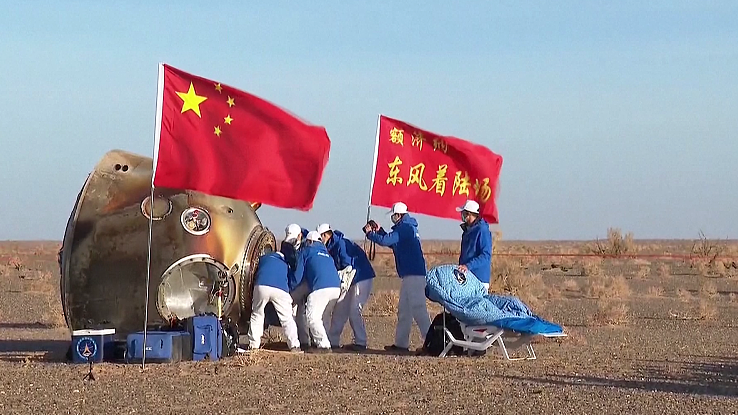
Staff prepare to help the Shenzhou-16 crew get out of the return module at the Dongfeng landing site in north China's Inner Mongolia Autonomous Region, October 31, 2023. /CFP
Staff prepare to help the Shenzhou-16 crew get out of the return module at the Dongfeng landing site in north China's Inner Mongolia Autonomous Region, October 31, 2023. /CFP
China's Shenzhou-16 astronauts concluded their five-month journey with fruitful achievement as the crew returned to Earth on Tuesday.
Shenzhou-16 is the first manned mission since the space station entered its application and development stage, where the taikonauts had more chunks of time to carry out scientific experiments and research in space.

CGTN infographic by Gao Hongmei, Liang Qian
CGTN infographic by Gao Hongmei, Liang Qian
The crew members for the first time included a Chinese civilian astronaut. The 37-year-old Gui Haichao, a professor at Beihang University, joined the mission as a payload expert. The public was intrigued by the fact that Gui wears glasses, the first person to take part in a Chinese manned mission to do so, raising an interesting discussion nationwide.
The commander Jing Haipeng became the first taikonaut to go to space four times. Zhu Yangzhu is the country's first flight engineer to enter the space station.
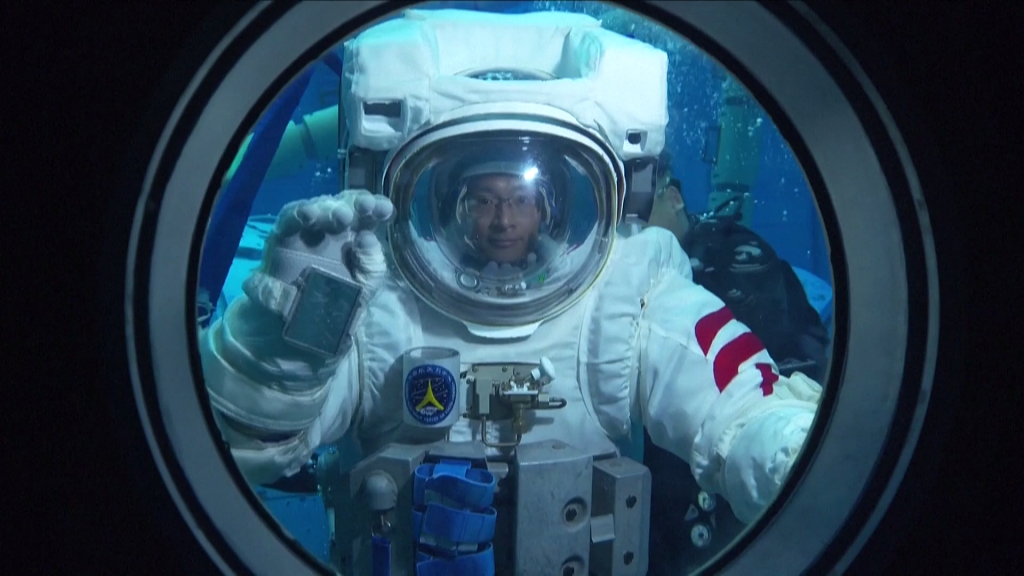
Taikonaut Gui Haichao participates in underwater training while wearing glasses. /CMG
Taikonaut Gui Haichao participates in underwater training while wearing glasses. /CMG
During their stay, they engaged in various tasks, including conducting an in-orbit handover with the Shenzhou-15 crew, carrying out scientific experiments, testing payload applications, performing one space walk and cargo tasks, installing extravehicular payloads, as well as maintenance and repair tasks on the space station.
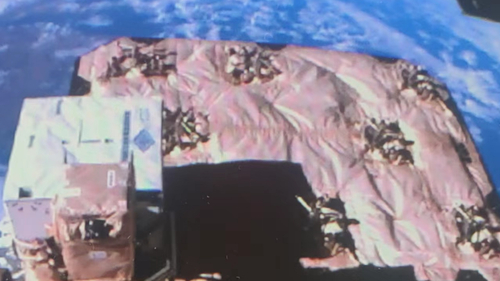
The experiment equipment installed at the preset platform outside the Mengtian lab module. /National Space Science Center
The experiment equipment installed at the preset platform outside the Mengtian lab module. /National Space Science Center
Scientific experiments
The crew conducted large-scale in-orbit tests in various fields, which are expected to yield significant scientific achievements in the research of novel quantum phenomena, high-precision space-time-frequency systems, the verification of general relativity, and the study of the origin of life.
In June, the crew performed a radiation biological exposure experiment, which happened outside the CSS for the first time with the help of a robotic arm, marking a milestone achievement in China's radiation biology and space science research. It is mainly used to study the impact of cosmic radiation and microgravity on model organisms, and to study the damage and protection of space radiation, the origin and evolution of life, and the development of space radiation mutagenic resources.
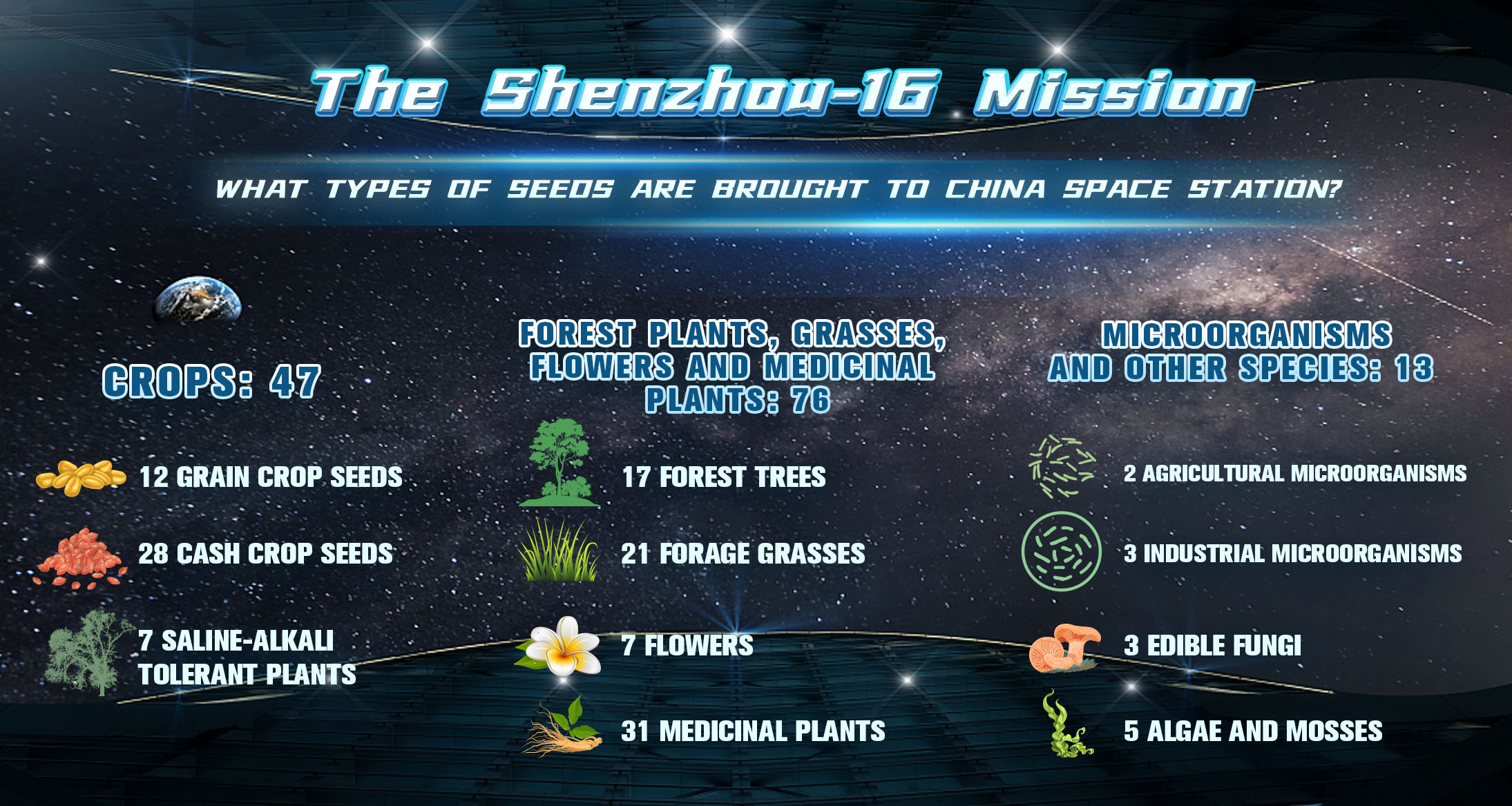
CGTN infographic by Zhu Shangfan
CGTN infographic by Zhu Shangfan
In addition, the Shenzhou-16 crew has brought up to 136 kinds of space breeding materials for space breeding experiments, including 47 crops, 76 forest plants, grasses, flowers and medicinal plants, 13 microorganisms and other species. During their stay, the crew has seen the harvest of lettuce, spring onions and cherry tomatoes in space and happily added them to their daily menu.
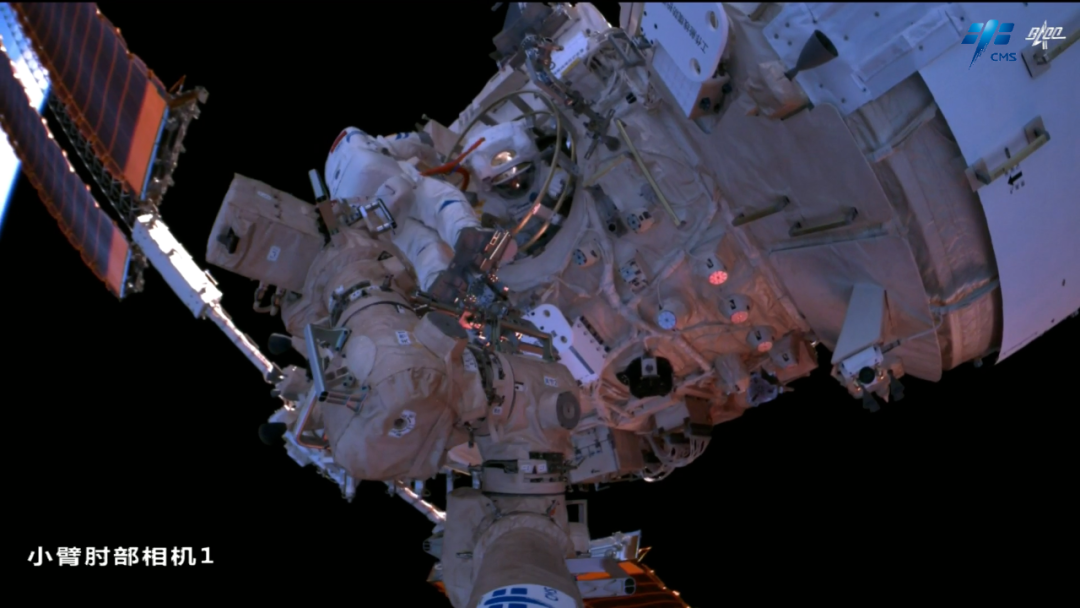
A Shenzhou-16 crew member works outside of the space station, July 20, 2023. /China Manned Space Agency
A Shenzhou-16 crew member works outside of the space station, July 20, 2023. /China Manned Space Agency
Space walk
The crew carried out their extravehicular activity (EVA) in July, completing all set tasks during the eight-hour spacewalk.
The taikonauts completed tasks including bracket installation and lifting of panorama camera B of the core module and the unlocking and lifting of panorama cameras A and B of the Mengtian lab module.
Jing and Zhu went out for the spacewalk. Zhu has become the first space flight engineer to perform an EVA.
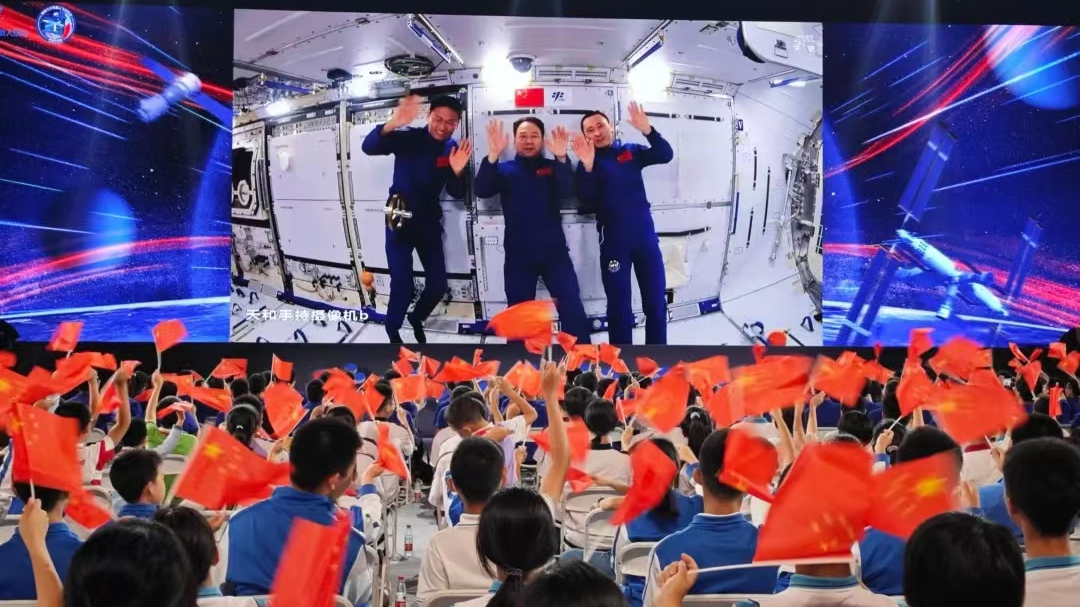
China's Shenzhou-16 crew livestreams the first science class from the Mengtian lab module of the China Space Station, September 21, 2023. /China Manned Space Agency
China's Shenzhou-16 crew livestreams the first science class from the Mengtian lab module of the China Space Station, September 21, 2023. /China Manned Space Agency
Space class
They livestreamed a science class from the Mengtian lab module, which is the fourth lecture of the "Tiangong Class" series, China's space science education program, aiming at inspiring young people to pursue their space dreams.
Apart from touring the Mengtian lab module, the crew conducted several educational science experiments. They demonstrated what a candle flame looked like during the burning process and how the water surface reacted to being hit by a table tennis ball.
More experiments were showcased to display laws of physics to the youth on the ground.